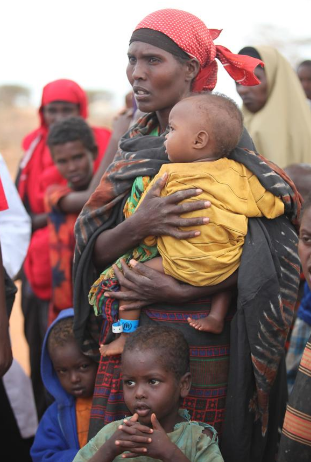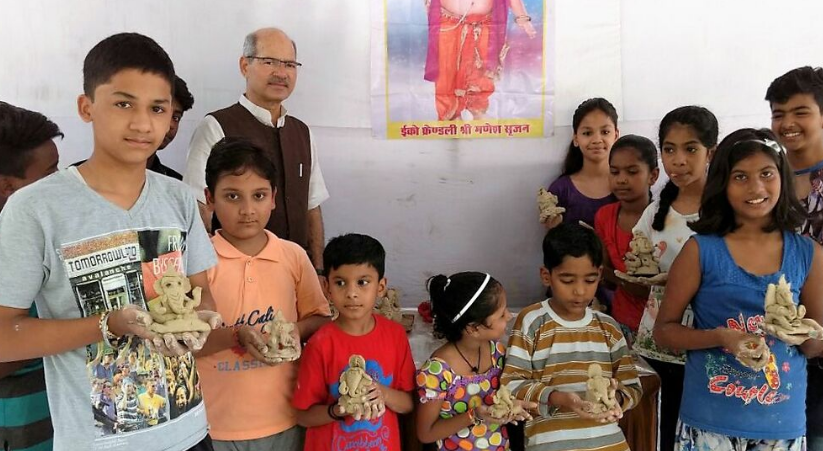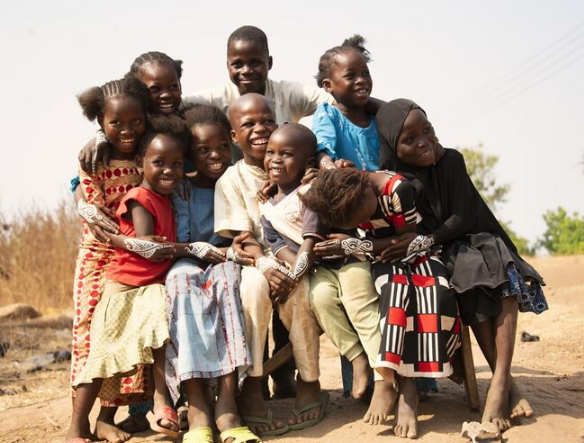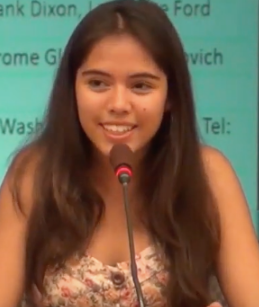Climate change has both a direct and indirect effect on children. Children are more vulnerable to the effects of climate change on humans than adults. The World Health Organization estimated that 88% of the existing global burden of disease is linked to climate change affecting children under 5 years of age. The Lancet review on health and climate change lists children as the worst-affected category by climate change. Children are physically more vulnerable to climate change in all its forms. Climate change affects the physical health of a child and his well-being. Prevailing inequalities, between and within countries, determines how climate change impacts children. Children have no voice or attention in terms of global responses to climate change. People living in low-income countries suffer from a higher burden of disease and are less capable of facing climate change threats.
- physical health
- global burden of disease
- climate change impacts
1. Climate Change Impact on Children

Children are affected by destruction of homes, threats to food security, and loss of family livelihoods brought about climate change. The effects on children may be exacerbated by social and economic inequality, armed conflict, and health epidemics.[1][6] Climate change effects fall under two main dimensions: direct or indirect, instant or postponed. The effects on the child's physical health include: death and injuries, heat diseases, exposure to environmental toxins; infectious, and other illnesses present within warmer temperatures.[2][7]
There is also a significant increase in mental health and learning issues such as post-traumatic stress disorder (PTSD), depression, and anxiety, sleep disorders, cognitive deficits, and learning difficulties.[3][8] Given this example about the post food period in Pakistan in 2010, 73% of 10- to 19-year-olds displayed high levels of PTSD, where displaced girls were severely impacted.[4][9]
Other severe occurrences that were detected were distress, grief, and anger; loss of identity; feelings of helplessness and hopelessness; higher rates of suicide; and increased aggression and violence.[5][10]
Adding to the physical effects, there are the psychological and mental health influences that are threatening to a child's wellbeing.[6][11]
2. Health and Wellbeing
Extreme events caused by climate change can destroy homes, schools, child-care centers, and other critical infrastructure.[7][12] Typhoon Haian flattened entire cities and towns on the islands of Leyte and Samar, Philippines. Many child survivors of Typhoon Haian lost their homes and belongings.[8][13] In 2020, Typhoon Molave caused floods and landslides that destroyed homes, placing an estimated 2.5 million children in Vietnam at risk. It killed 9 and displaced more than one million individuals in Vietnam and the Philippines.[9][14]
Climate events have caused severe damage to lives and livelihoods.[1][6] Typhoons, storm surges, and other disturbances have resulted in loss of assets and capital and declines in family income among farmers, fishers, informal sector workers, and small business owners.[10][15] Families with more children are more vulnerable to catastrophic out-of-pocket health expenses.[10][15] After Typhoon Parma hit the Philippines, there was a rise in school dropout rates resulting from the loss of family incomes. Children who continued with school sometimes had to go to class without allowances to buy food.[10][15] In rural areas, fields, gardens, fishponds, crops, fishing boats, and farming equipment have been destroyed, while livestock have been lost, affecting food security for entire communities.[10][15]
3. Environmental Impact

Children are sensitive to the lack of basic natural resources which is caused by natural phenomena droughts and flooding. Significantly around 160 million children live within extremely high drought regions and over 500 million inhabit areas with extremely high flood occasion.[11][16] When it comes to the natural phenomenal occurrences, natural disasters lead to displacement of families and children. This displacement is done because of the extreme weather events with increased rates of physical and mental health insecurities.[12][13][17][18]
On the global level, children are estimated to tolerate 88% of the burden of disease because of climate change. Every child is dependent on caregivers and within their communities. The real threat is within the underprivileged areas which are already suffering from environmental; challenges. These will result in various diseases , disabilities , high death rate among children.[14][19] In 2013, Intergovernmental Panel on Climate Change, assessed that the global temperatures will likely increase to 4.8 °C by 2100 if the current emissions continue to rise.[15][20] It is important to mention that constant exposure to air pollutants affects the birth weight, small size for gestational age (SGA), and preterm birth cases.[16][21] Once children are more exposed to air pollution (O3, particulate matter, SO2, and/or NO2) they tend to suffer from asthma[17][22] resulting an increase airway oxidative stress and airway inflammation in asthmatic children[18][23] Air pollution affects a child's neurodevelopment. For this if we come to compare a child born within h a cohort born before the closure of a located coal power plant, a cohort conceived after plant closure had significantly lower cord blood levels of PAH–DNA adducts and higher levels of brain-derived neurotrophic factor (BDNF), a protein needed in early brain development. This is where the risk lies.[19][24]
4. Climate Change Action by Children
4.1. School Strike for Climate
4.2. Legal Action
Juliana v. United States was dismissed in 2020 on the grounds that the plaintiffs lacked standing to sue, but a new case has been launched on narrower grounds.[20][25] In the case "Duarte Agostinho and Others v. Portugal and Others" brought by children and young adults the European Court of Human Rights has asked 33 states to respond by May 2021 with information on how they are trying to limit climate change.[21][26]
5. Child’s Climate Change Engagement
Facing the challenges arising from climate change is critical especially when dealing with its impact on children. For this, targeting the issue through an Educational and Arts-based approach and involving the parents along the way is crucial.[16][21]
It is important to integrate climate change within the curriculum.[22][27] Once children learn about the existence and the demanding urgency of the global environmental problems around them, they become more aware and engaged towards improving the world's environmental status.[23][28]

Arts help children's in different developmental aspects. By encouraging in having meaningful self-expression with respect to any ideas, climate change here, they are offered a medium to develop a sustainable resolutions towards their community and the globe.[24][29] It is noted that once there is a strong relation between kids and their parents, the latter's perception of issues could be affected through their kid's efforts. The more children's communicate climate change issues, the better the awareness it could be created among both. So, fostering this friendly communicative attitude has a positive effect on the parental perception and action later.[25][30]
6. Addressing Climate Challenges
It is important to know that a child is a vulnerable individual to any issue, climate change is one of the major rising concerns for children and it needs to be addressed wisely. Remining them that they are not alone facing this challenge, sharing their worries and concerns, and turning the negative vibes into positive ones are recommended to reduce the impact of climate change on a child's wellbeing.[26][31]
While children are often the most effected by climate change, a poll by UNICEF found that children and other youth also want to feel empowered in the governance process for addressing climate change.[27][32]
7. Global Initiatives
A number of global initiatives and projects had been launched to address the impact and challenges of climate change on children.
| Title | Organization(s) | Type | Year |
|---|---|---|---|
| Global Initiative to Advance Children’s
Right to a Healthy Environment |
United Nations | Initiative | 2019-2021 |
| Goal of NCCAP | Kenya’s National Climate Change Action Plan | Action plan | 2018-2022 |
| Small Grants Programme (SGP) | UNDP, Global Environmental Facility | Grants and projects | 2015 |
| Climate Sensitive Humanitarian Assistance | UNICEF | Initiative | 2015 |
| United Nations Joint Framework Initiative on Children, Youth and Climate Change | United Nations | Framework initiative | 2013 |
| NASA's Climate Kids | NASA | Website | 2010 |
| Protecting children’s health in a changing environment | World Health Organization | Report | 2010 |
| Climate change: Take action now | UNICEF, World YWCA, girls worldwide say, FAO,
International Federation of Red Cross and Red Crescent Societies, World Organization of the Scout Movement, The Duke of Edinburgh’s Award |
Initiative | 2003 |
8. Youth Activists on Climate Change and Children

Youth activism needs to be supported and advocated to reduce the impact of global climate change on children.[28][33]
- Mari Copeny
- Xiye Bastida
- Autumn Peltier
- Xiuhtezcatl Martinez
- Lesein Mutunkei
- Ella and Caitlin McEwan
- Leah Namugerwa
- Ridhima Pandey
- Isra Hirsi
